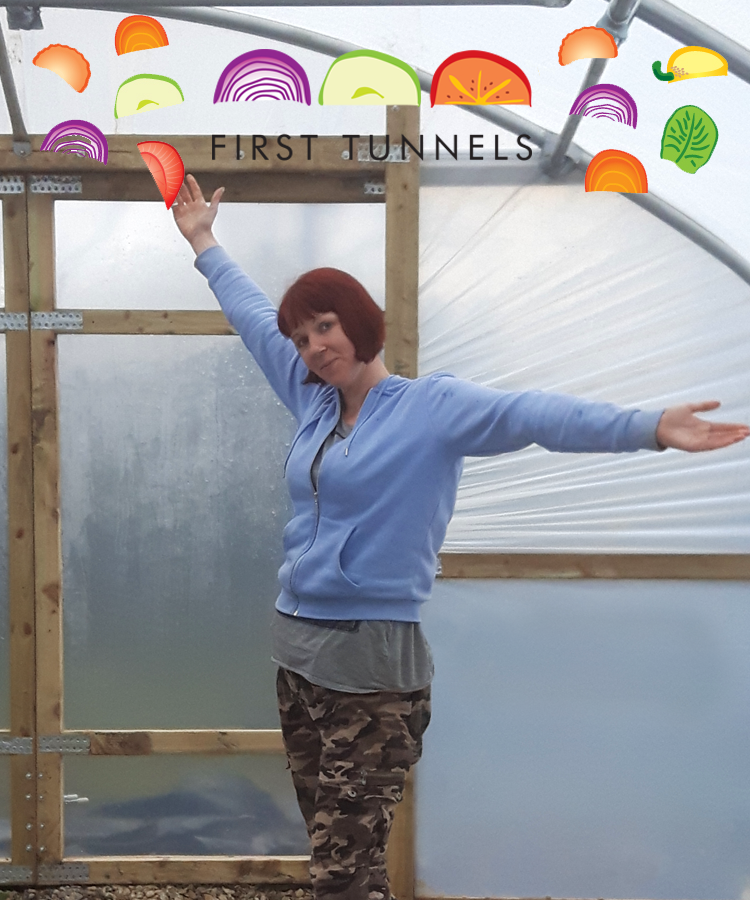In the first of a special series of blogs for us, popular gardening journalist, Kim Stoddart outlines the many benefits of polytunnel growing.
I’ve had polytunnels for more than eight years now and I couldn’t imagine growing produce without them. Living in the West of Wales we expect rain, but the past few winters have been extreme. With the Met office now predicting there to be a one-in-three chance of record rainfall hitting England and Wales each winter, there has never been a better time to get polytunnel growing.
If you want to grow a wide range of delicious home grown edibles, some form of cover is really a boon as the extremes of climate change really start to bite. The Artic weather front we’ve just experienced being a good case in point. Even climate change experts didn’t see that one coming.
Doom and gloom aside, there’s also the exciting potential that your own little under cover haven affords you. An extended growing season, the ability to nurture an exciting array of Mediterranean edibles and the knowledge that when it’s absolutely chucking it down outside; you can still garden away to your heart’s content, totally protected against the elements.
There’s also the potential to have a great deal of fun in the process, as a polytunnel enables you to experiment a lot more than you might be able to do otherwise. I’ll be looking at this over the coming blogs alongside lots of time saving tricks, techniques and ideas to help you create a space that works for you and the crops you would like to grow. Fruit and vegetable growing is often made out to be a lot more complicated than it in reality needs to be, so for growers of all levels, I’ll be looking at the things you don’t need to do, as well as recommendations for enjoyable fuss-free, productive harvests.
First off, here are some other ideas to help provide greater resilience in your polytunnel for 2018:
An alternative to crop rotation
Most gardening books will tell you about the importance of crop rotation “blah, blah, brassicas after legumes”… “waffle, waffle, potatoes first…” It’s a planting system that is undoubtedly sensible if a) you’re a market gardener and will be growing produce en masse or b) you prefer to keep planting in uniform blocks or rows. However there is another way…
If, like the majority of gardening folk, you’re growing on a relatively small scale (for yourself and your family), then a higgledy–piggledy approach is definitely worth considering. Rows upon rows of the same thing are all very well and good if that’s what you like, but I believe there’s room for more creativity and fun with a range of different types of vegetable and fruits to keep each other company.
The sheer diversity of this approach also helps keep your soil healthy, avoiding nutrient loss or pathogen build up. Additionally, mixed planting with a range of different sized (and smelling) vegetables and fruit co-existing together seems to also help prevent so many pests in the first place. It also gives produce picking a bit of a foraging edge that I personally find more exciting than block growing alone.
Whether you want to dabble with weaving companion plants into your existing (and planned) veg beds or would like to embrace this approach more ambitiously here are just a few combinations and methods to help you on your merry mix and match way. More on this system over the coming months…
Protecting your soil
An increasing number of people (myself included) now believe that digging is a bit of a false economy. For one, it’s really hard work on the back and by disturbing the soil, you are actually negatively impacting on the fungal and microbial life therein which can aid the ability of the earth to hold and absorb water.
The no-dig approach involves top dressing with compost before planting, so that no ground disturbance is required at all. Although I don’t follow it religiously (I love digging up potatoes for example), I do take great care not to damage the ground. It is after all the precious heart and soul of our produce growing efforts.
Kim Stoddart is a gardening columnist for Grow Your Own and Country Smallholding magazines. She also writes for the Guardian and runs polytunnel and growing courses from her training gardens in beautiful West Wales. Kim has partnered with First Tunnels and as such is offering our customers a very generous 30% discount off all April and May courses. Just book before the 25th March to qualify. www.greenrocketcourses.com
